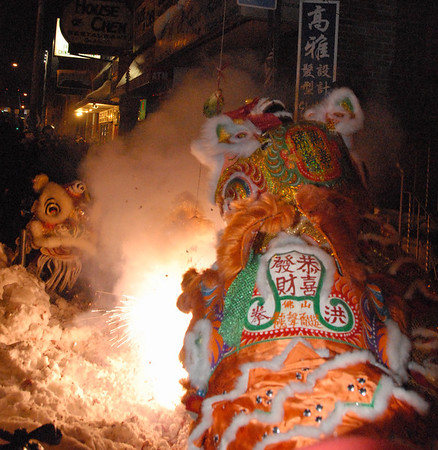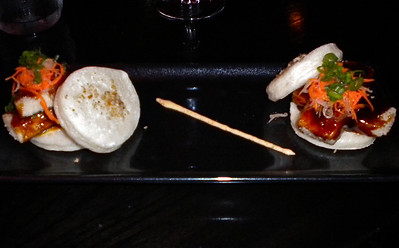
Embarrassingly enough, I have long thought of Chinese New Year as the day when I head down to Chinatown, watch a dragon-festooned parade and then grab some Chinese food at whatever restaurant is the least crowded. That’s it. That’s as far as my cultural knowledge and experiences extend regarding China’s most important holiday. That is, until this year . . .
On Sunday evening I’ll be joining friends for an authentic Chinese New Year’s Eve feast. To prep myself for the night’s festivities and also rid myself of this horrible ignorance, I’ve been delving into what Chinese folks historically do to ring in a new year.
Traditionally people celebrated the end of the year with religious ceremonies and rituals. At temples they lit candles and incense and paid homage to their ancestors. At home they decorated their dining tables with red tablecloths and their windows and doors with red paper; red signifies happiness and good luck in Chinese culture. They also removed the past year’s kitchen god, offering honey and other sweets to him before burning his portrait, allowing him to ascend to heaven on wisps of smoke.

While these customs continue to this day, family and friends are now just as likely to gather together in restaurants as they are to meet in homes and temples. What they eat is still dictated by tradition, though. To start off the next year on a positive note, they favor sunny foods — foods that are round in shape and gold in color. These include oranges, tangerines, steamed buns and jien düy, fried, sesame-dusted dough balls filled with sweet bean paste.
Crescent-shaped dumplings known as chiaotse feature prominently on New Year’s menus. These small, steamed dumplings are filled with pork and cabbage, foods associated with good fortune in countless cultures. The steamed cake nien kao is also consumed at this time. Made from rice flour and brown sugar, it has a lucky word stamped in red on it.
Fish, which signify moving forward in the new year, clams, dried oysters and pig’s trotters are commonplace. As the Chinese word for fish, yu, also means “plenty,” fish is often served as the last course of the night, hinting that there will be plenty in the next year.
Pork and seafood aren’t the only meats on the menu. Chicken and duck also make appearances. For vegetarians there is Buddha’s Delight, which features mushrooms, bamboo shoots, bean curd and ginger.
Needless to say, people eat well during this period. Fortunately, I will, too. Plus, I’ll be somewhat informed as I celebrate the upcoming Year of the Dragon.
CHIAOTSE
From Elizabeth Luard’s Sacred Food (Chicago Review Press, 2001)
Makes 60 dumplings
for the filling:
2 pounds Chinese cabbage, slivered and chopped
11/2 pounds ground pork
1-3 scallions, finely chopped
2 teaspoons finely chopped fresh ginger
3 teaspoons salt
4 tablespoons soy sauce
1 teaspoon sugar
for the dough:
3 cups all-purpose flour
11/2 cups water
Blanch the cabbage in boiling water and then rinse under cold water.
Mix the cabbage with the rest of the filling ingredients, kneading thoroughly with your hands.
For the dough, sift the flour into a large bowl and pour the water into a well in the middle. Work thoroughly with your hands to make a smooth, elastic but still quite firm dough – 10 minutes kneading time.
Form the dough into a ball, cut into quarters and roll each quarter into a thick rope. Keep each rope covered with plastic wrap or a damp cloth as you work. Cut the first rope into 15 equal pieces and work each piece into a ball – flour your hands first – and drop onto a floured board.
Roll each out into a thin disk the diameter of your hand with a rolling pin. Drop in a teaspoon of filling. Pleat one side of the disk to make little gatherings and bring it over the top of the filling to meet the other side. You should have a plump crescent with a seam over the top and one side fatter than the other.
Transfer to a lightly floured baking sheet and continue until all the dumplings are made. Freeze and batches and place in bags.
Drop the dumplings in boiling water and cook for 20 minutes, until the filling is cooked through. Serve with a dipping sauce of vinegar and soy sauce.